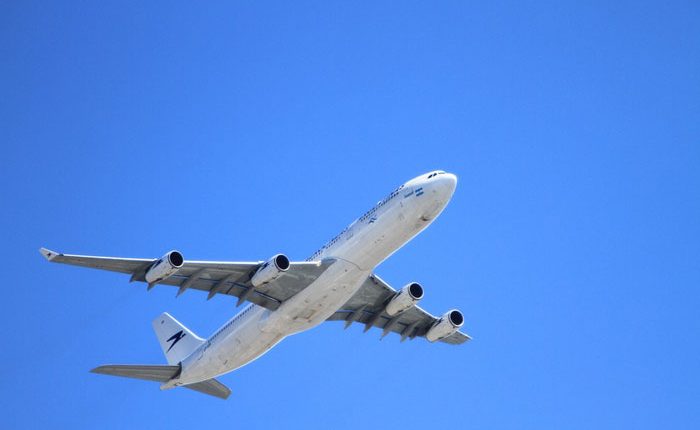Climate impact of airlines reduced with small changes
By making small changes to some flight routes, airlines could reduce their climate impact by up to 10%, research by University of Reading scientists has shown.
Their new study shows airlines could make a large positive impact on climate change by altering flight routes to avoid areas where emissions have the largest impact. The changes would be comparatively small – resulting in only around a 1% increase in operating costs.
An international research team, including Professor Keith Shine and Dr Emma Irvine from Reading’s Meteorology Department, alongside experts from the DLR Institute of Atmospheric Physics in Germany, Eurocontrol in Brussels, and the Center for International Climate and Environmental Research (CICERO) in Oslo, published their results today in the journal Environmental Research Letters.
Professor Shine, Regius Professor of Meteorology and Climate Science, said: “Climate-friendly routing of aircraft has an exciting potential to decrease the climate impact of aviation, without the need for costly redesign of aircraft, their engines, and airports.
“With more targeted research, it could become a reality in the next 10 years.”
Lead author Volker Grewe, from the DLR-Institute of Atmospheric Physics and Professor at the Delft University of Technology, said: “Around 5% of man-made climate change is caused by global aviation, and this number is expected to rise. However, this impact could be reduced if flights were routed to avoid regions where emissions have the largest impact. ”
Aviation is different from many other sectors, since its climate impact is largely caused by non-CO2 effects, such as contrails and ozone formation. These non-CO2 effects vary regionally, and, by taking advantage of that, a reduction of aviation’s climate impact is feasible.
“Our study looked at how feasible of such a routing strategy is. We took into account a representative set of weather situations for winter and summer, as well as safety issues, and optimised all trans-Atlantic air traffic on those days.”
Large benefit for small cost
Using calculations of emissions, climate change functions, and air traffic simulations, the research team evaluated 85 alternative routes (17 horizontal and five vertical) for each of the roughly 400 flights crossing the North Atlantic in either direction each day.
Professor Grewe said: “Our results show that under appropriate framework conditions and regulations, cost-effective climate-optimized routing has the potential to significantly reduce the climate impact from aviation.
“We adopted a detailed modelling framework to estimate the benefits and costs of air traffic routing options over the North Atlantic. The results for five representative winter and three representative summer situations show the potential to reduce the climate impact of aviation by roughly 10% at relatively low costs of 1%.”
The study showed that, in all-weather situations, routes could be found that reduced the climate impact at low costs, though the intensity in climate impact reduction varied. ”
Although cost increases were low, they probably constitute a barrier to implementation, since the airline’s return on investment is also in this order of magnitude,” said Professor Grewe. “However, with a market-based measure in place, which includes also these non-CO2 effects, costs for climate-optimized routing could be traded with costs for equivalent CO2 emissions. That would allow climate-optimal routing to become beneficial for both climate and airlines.”
Four hurdles that must be overcome
However, the study raised questions and potential concerns, regarding the maturity level, scientific uncertainties, and political and ethical questions.
Professor Grewe said: “The concept of climate-optimal routing is not mature enough to be directly implemented in the real world, basically for four reasons.
“First, the calculation of the climate-change functions must be robust, and fast enough to become operational, and we must have high confidence in the forecast weather conditions. Second, consensus needs to be achieved on to what extent additional contrail formation should be allowed, which – over a chosen time span – cools the global climate more than the additional CO2 emitted by climate-optimized routing warms.
“Third, the implications on air traffic management have to be identified. Although safety issues do not limit the results for the North Atlantic flight corridor, they might limit the applicability in areas of higher air traffic densities. And finally, a market-based measure or alternative measures, including these non-CO2 effects, are needed to foster climate-optimal routing.
“Our study clearly shows the benefits in climate impact reduction, if these barriers can be overcome.”
More information: Phys.org

